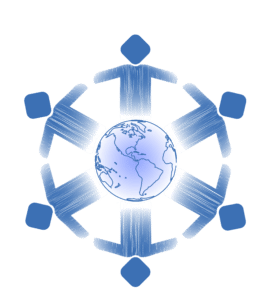The addiction pandemic is a multifaceted Public Health crisis of international concern. It is composed of layers of individual development, social influences, cultural values, and environmental conditions. As such, a multilevel perspective is needed to analyze its etiology and consequences. In 2018, according to the Substance Abuse and Mental Health Services Administration, 1 in 13 people aged 12 or older needed substance use treatment. However, of these 21.2 million people who needed treatment, only 3.7 million actually received some form of care (SAMHSA, 2019).
Substance abuse is a cross-disciplinary topic of research and concern and has been labeled as a “chronic disease with a high risk of relapse.” Addiction has been recognized as a pandemic, acting as a synonymous public health crisis in countries around the globe. In the World Drug Report (2019), the United Nations published that “in 2017, 35 million people suffered from drug use disorders in the world.” Unfortunately, despite the prevalence of addiction and substance use disorders, the United Nations recognized that “prevention and treatment continued to fall short in many parts of the world, with only one in seven people with drug use disorders receiving treatment each year.”

Despite substance abuse and addiction being critical Public Health issues, there are major barriers that prevent people with substance abuse disorders and addiction from accessing proper treatment. There is a lack of insurance coverage and adequate reimbursement for substance use services in primary care and specialty treatment in the USA, as stated by the American Addiction Centers (2021), with few health insurance providers eligible to get reimbursement for substance use disorder services. Many people are uninsured due to the high cost of insurance, unemployment or lack of insurance through an employer, and a distrust in the insurance sector. While Medicaid is the largest payer for SUD services in the US, a barrier remains where persons can lose their Medicaid coverage.
Stigmatization is possibly one of the most detrimental hindrances to a person’s ability or willingness to get treatment to deal with addiction and substance abuse disorders. Stigma fosters a lack of respect for a person or a group of people because society “disapproves of their behavior or traits”. It goes beyond an abstract concept as it is constantly present and dictates how society perceives people. In an attempt to help combat this stigmatization, the United Nations General Assembly Special Session (UNGASS, 2016) on drugs recognized drug addiction as a “complex multifactorial health disorder characterized by chronic and relapsing nature that is preventable and treatable and not the result of moral failure or a criminal behavior”.
The UNGASS (UNGASS, 2016) continued to characterize substance use disorders as chronic brain disorders that can be treated and even people suffering the most severe forms can recover, provided they have access to evidence‐based treatment and social support. They recommend the use of evidence‐based approaches to drug policy based on public health principles, emphasizing social protection and health care instead of conviction and punishment, noting that criminal sanctions are ineffective at preventing or addressing substance use disorders.

There are strong recommendations made by the UNGASS aimed at combatting the substance use and addiction crisis; eliminating stigma and discrimination toward individuals with substance use disorders, addressing substance abuse as a public health problem instead of criminal justice issues, implementing evidence‐based prevention programs and treatments, collecting and utilizing scientific data and consulting scientific experts in policy-making, engaging diverse stakeholders in coordinated policy-making, supporting drug‐related research, and ensuring access to scheduled medications for therapeutic use (UNGASS, 2016).
Substance abuse and addiction are not limited to any specific social groups. It is essential to understand the unique psychological, personality, cognitive, socioeconomic, familial, and cultural differences of various social groups and to explore what common and unique characteristics they hold in terms of the initiation, processes, and consequences of substance abuse and addiction.
The Addiction Training for Health Professionals (ATHP) program is dedicated to spotlighting substance abuse and addiction to help ensure that this crisis is met with the urgency it deserves. By supporting research, collaborations between experts and other organizations, as well as democratizing education, ATHP is combating the stigmatization of substance abuse and addiction. The program sponsors the design and development of numerous courses that are globally accessible online at no cost. At the core, substance abuse and addiction learning material are threaded into all courses, and we believe that doing so not only helps break the cycle of stigmatization but also stresses the importance of recognizing that substance abuse and addiction know no boundaries.
References
Hardey, S., Thomas, S., Stein, S., Kelley, R., & Ackermann, K. (2021, November 19). What Are the Barriers to Accessing Addiction Treatment? American Addiction Centers. https://americanaddictioncenters.org/rehab-guide/treatment-barriers
Lipari, R. N., & Park-Lee, E. (2019). Key Substance Use and Mental Health Indicators in the United States: Results from the 2018 National Survey on Drug Use and Health. U.S. Department of Health and Human Services.
Outcome Document of the 2016 United Nations General Asembly Special Session on The World Drug Problem. UNGASS Special Session on The World Drug Problem. (2016). https://www.unodc.org/documents/postungass2016/outcome/V1603301-E.pdf
World Drug Report 2019: 35 million people worldwide suffer from drug use disorders while only 1 in 7 people receive treatment. (2019). United Nations : Office on Drugs and Crime; United Nations Office on Drugs and Crime. https://www.unodc.org/unodc/en/frontpage/2019/June/world-drug-report-2019_-35-million-people-worldwide-suffer-from-drug-use-disorders-while-only-1-in-7-people-receive-treatment.html?ref=fs1

Alixandria Ali, BSc
Author

